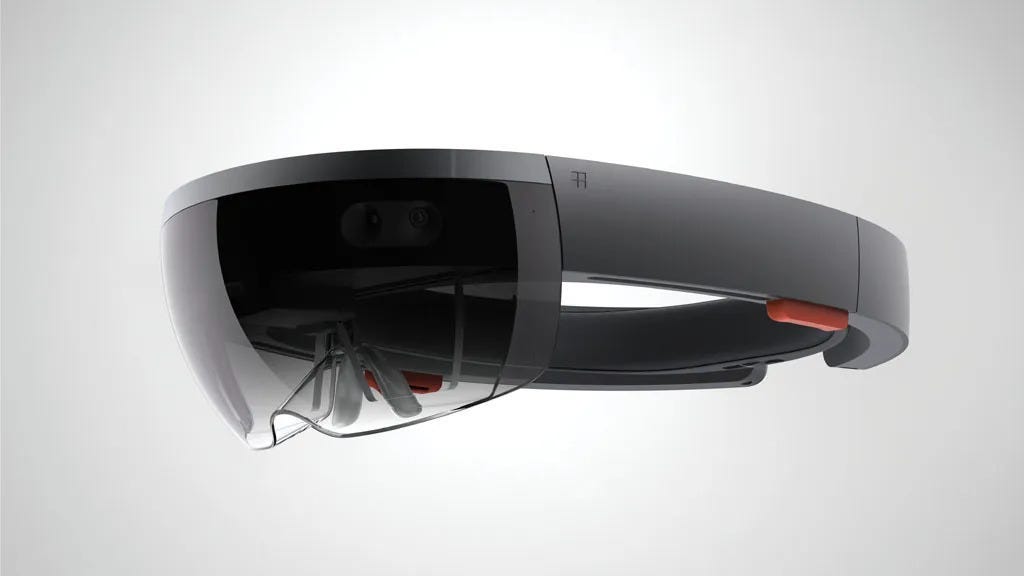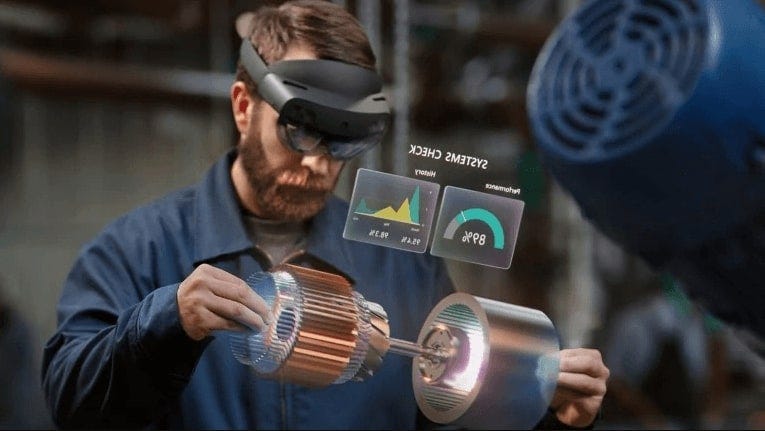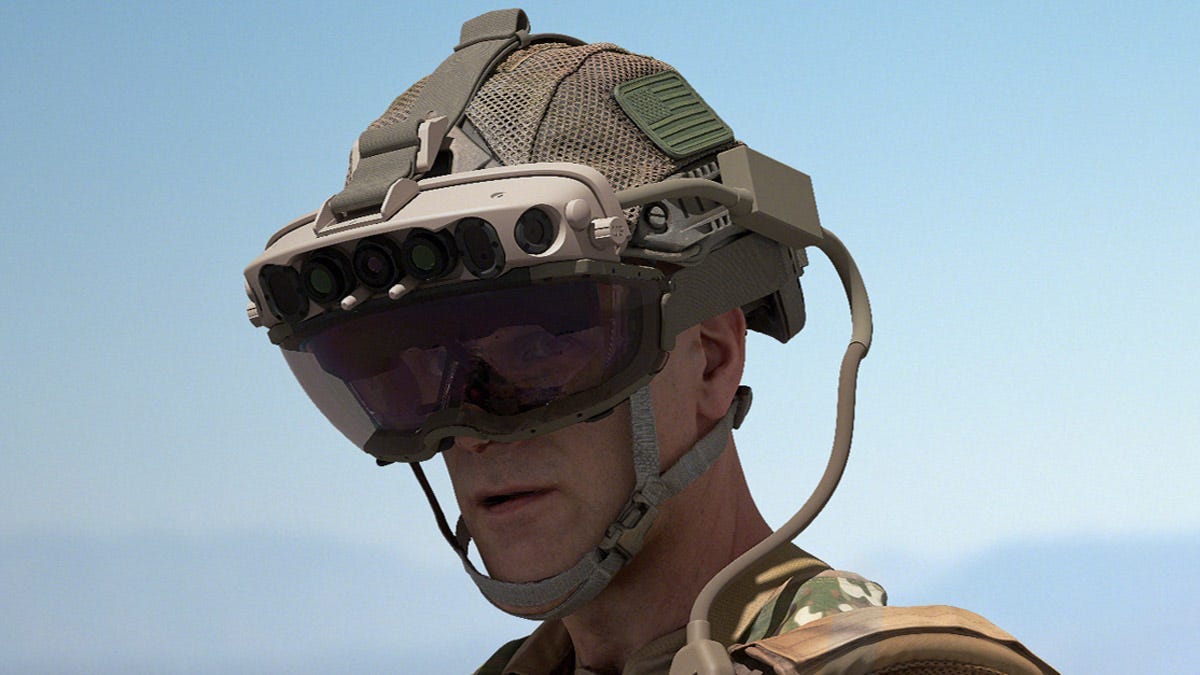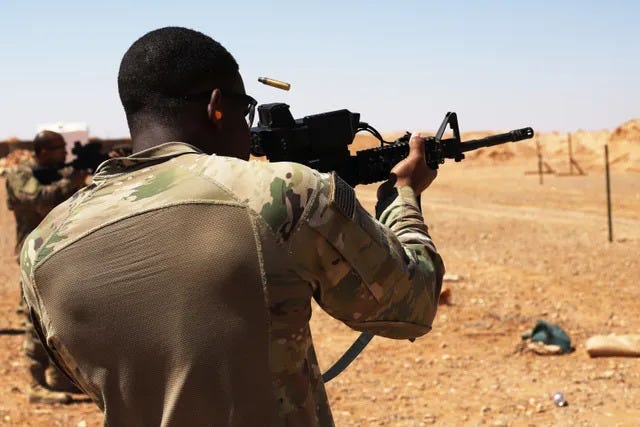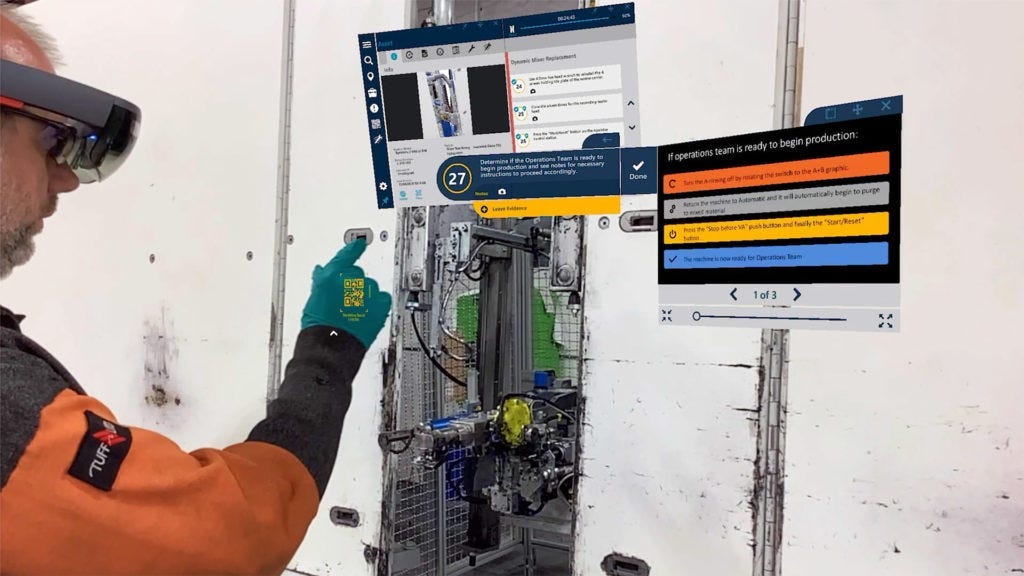The Augmented Soldier
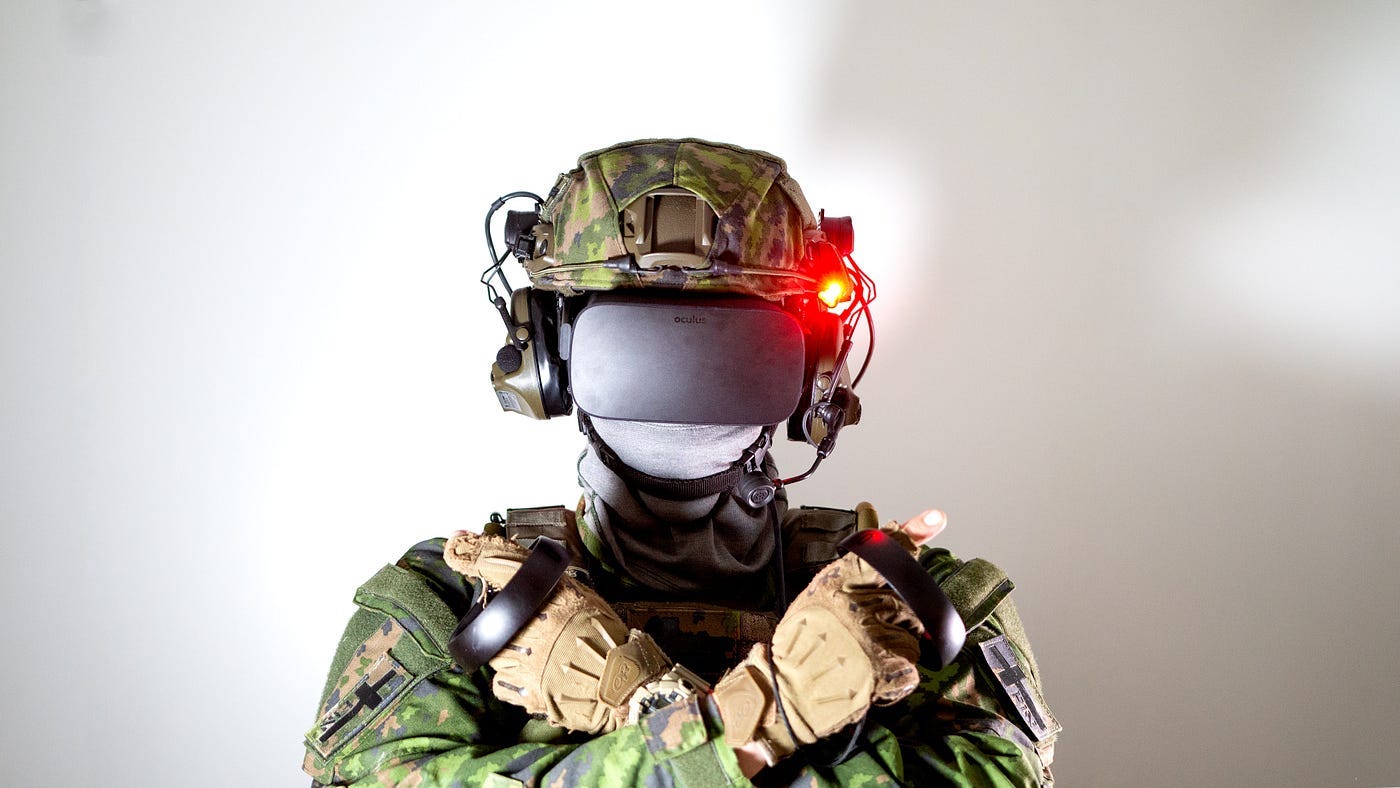
What’s this about: In our last piece titled “AI and Warfare,” we discussed how AI was being implemented into the various operations of militaries worldwide, such as weapon development and military logistics. But there are even more examples of AI in the military, such as their use to create the augmented soldier.
Military AI development is enhancing the equipment and gear of soldiers, and with the rise of augmented reality (AR), soldiers are dramatically increasing their capabilities.
Go Deeper to Learn More -
An augmented soldier is a service member with enhanced physical, cognitive, and perceptual capacities. This leads to improved operational efficiency, and it is achieved in two main ways. The first is to supply the soldiers with special military AI equipment, which is already being practiced. The second one, however, has yet to be realized. It is the implanting of an invasive chip that could improve cerebral capacity. (Think of something along the lines of Elon Musk’s Neuralink.)
Let’s look at some of the ways AR is being used to create augmented soldiers.
Microsoft AR Headsets
In 2021, Microsoft won a U.S. Army contract worth up to $21.9 billion over ten years. The tech giant was tasked with developing and delivering over 120,000 augmented reality headsets based on its own HoloLens AR headset.
The standard HoloLens comes in at $3,500 and enables users to see holograms overlaid over the actual environment. They can then interact with the environment through hand and voice gestures.
The particular version developed for the military is called the Integrated Visual Augmentation System, or IVAS. When you first put the goggles on, you are presented with a map that indicates where you are. (Think of the maps in video games that indicate where you are in the world.) For example, if you are standing inside a building, it would show you a birds-eye view of the building, as well as surrounding buildings. As you move around, so does the cursor on your map.
The goggles can also show different waypoints, which a soldier could use to locate other squad members or known enemy positions.
Anyone who has ever played first-person shooter games would find all of this extremely familiar. With that said, the system takes it much further, showing things like thermal imaging. IVAS is a lot less noticeable when compared to night vision goggles, which glow green when used. IVAS still emits a glow, but it is far tamer than night vision.
IVAS also shows the aim from the weapon through the visor, meaning soldiers can still use weapons while wearing the headset.
Computerized Sights
Another significant component of the new augmented soldier is computerized sights, which improve sighting systems designed to lock onto targets. These computerized sights can also tell military personnel where to aim or when to fire a weapon.
One such example of this military AI is the Israeli-made Smart Shooter SMASH 2000 system, which consists of an optical sighting system that mounts to the top of a weapon. The system also includes a special grip and a pressure button attached to the handguard. All of this enables military personnel to aim just as they would with any standard weapon and sights, and it makes it easier to track small, moving targets like drones.
The main difference between this system and previous ones is the SMASH 2000’s ability to “lock on” when crosshairs are aimed at a target. The system is driven by software that computes an optimal point of aim, and it can do so even when the target is moving. This software analyzes the shooter’s movements, which are often a factor in stressful environments.
The SMASH 2000 records via a camera and can take still images, which can later be used for analysis. This feature is especially useful for training since it helps personnel improve their aims.
Aircraft Maintenance Training
AR is a highly valuable technology for military maintenance training, which is why the U.S. Air Force uses the augmented reality solution Manifest to train jet engine mechanics. Manifest enables new workers to train through the AR system so skilled aircraft maintenance workers can be on call for missions.
To analyze how effective the Manifest system is, the Air Force Institute of Technology (AFIT) designed a study to measure its impact on technician performance. The study analyzed routine technical orders converted to Manifest AR content with visual sequential steps overlain onto the technician’s field of view. The technicians, wearing a heads-up display unit, then completed tasks using traditional and Manifest content. After 25 experiments were carried out, the results demonstrated improved accuracy and efficiency with Manifest, including 53% fewer errors and no considerable time differences.
AR vs. VR
Now that you know how augmented reality is being used in military equipment, it’s important to recognize why AR is preferred over VR in these scenarios. AR has proven to be more beneficial than VR in military equipment, despite its inherent problems like connectivity issues, difficulty with the alignment of real-world and simulated objects, low processing power, weak radio signals, weight issues, and limited field of view.
With that said, AR is often cheaper than VR and still has fewer limitations. One of the major reasons military personnel don’t rely on VR is due to the motion sickness it can cause. VR also doesn’t have the same abilities as AR to become dual purpose, meaning militaries can use it in training and on the battlefield.
Besides those specific differences in relation to military use, let’s take a broader look at what separates the two.
Main Features of AR:
Augments real-world scene
User has sense of presence in the real world
Partially immerses user into the action
More real-world than virtual
Enhances both real and virtual worlds
Main Features of VR:
Completely immersive virtual environment
Visual senses under control of the system
Fully immerses user into the action
More virtual than real-world
Completely “fictional” world
Augmented Military Equipment
Artificial intelligence technologies are drastically changing military equipment, and we have already reached a point at which we have augmented soldiers and workers. This will only increase and become more apparent as the technology advances. Whether it’s AR headsets for combat and training or computerized sights, AI is being implemented to allow all personnel with a device to access highly valuable data. This enables both combat fighters and workers to achieve far higher levels of intelligence both on and off the battlefield.
These technologically advanced weapons and equipment are constantly evolving, and various countries are pouring money into their development. Augmented military equipment can drastically change the outcome of conflicts, especially since much of war depends on what a soldier knows about enemy targets and where they are located. These technologies improve intelligence in this regard, meaning tomorrow’s soldiers will know much more than today’s.




